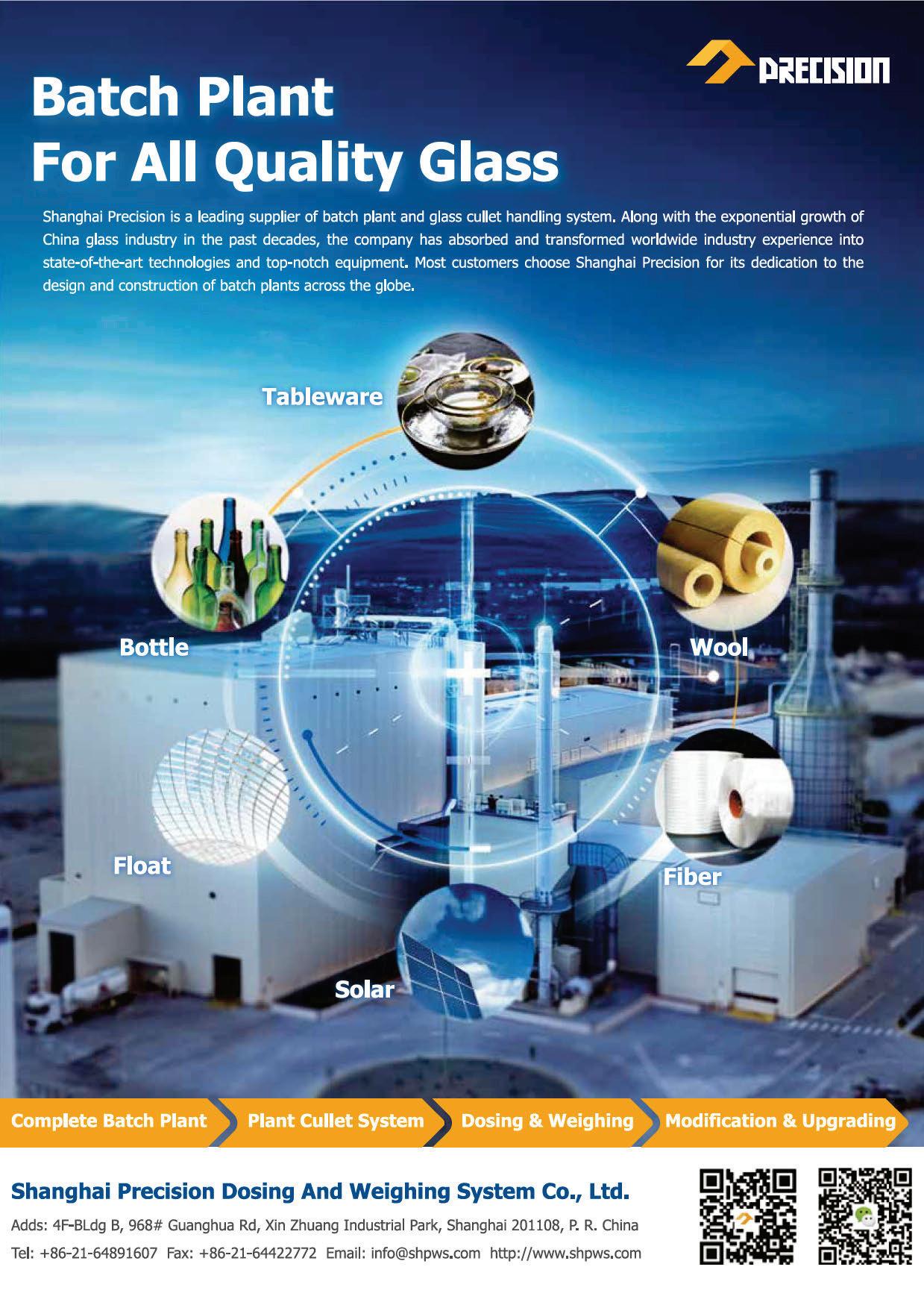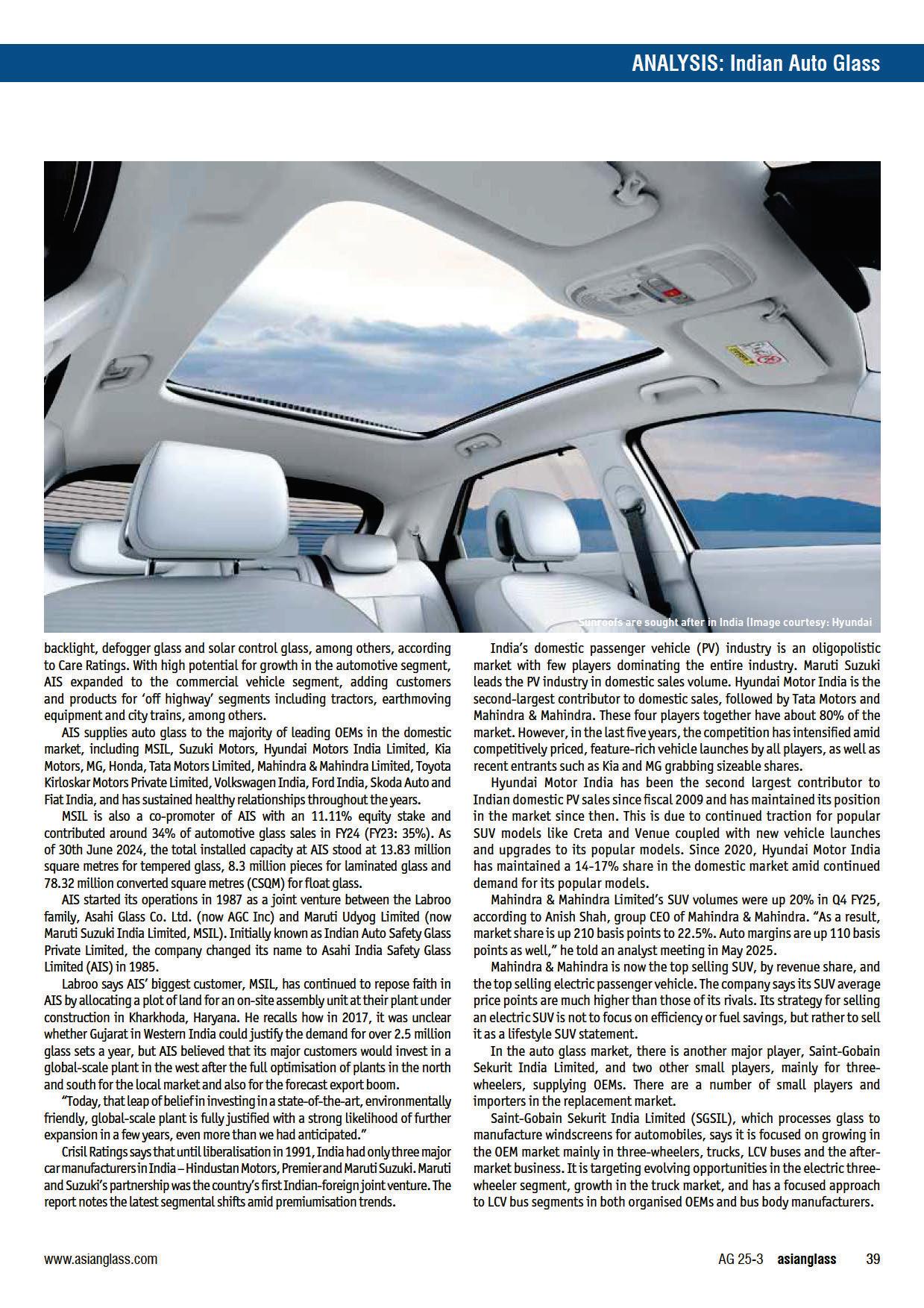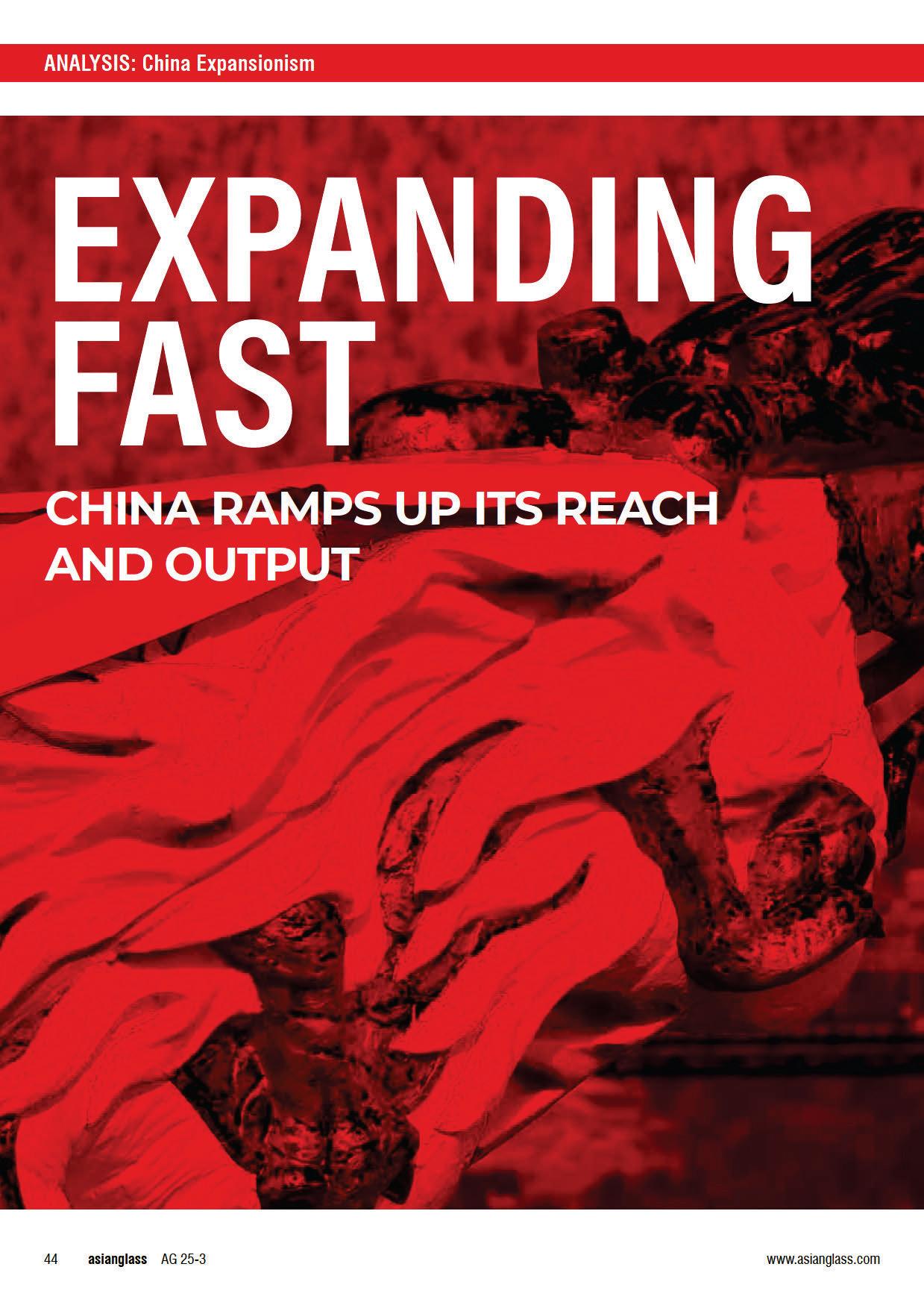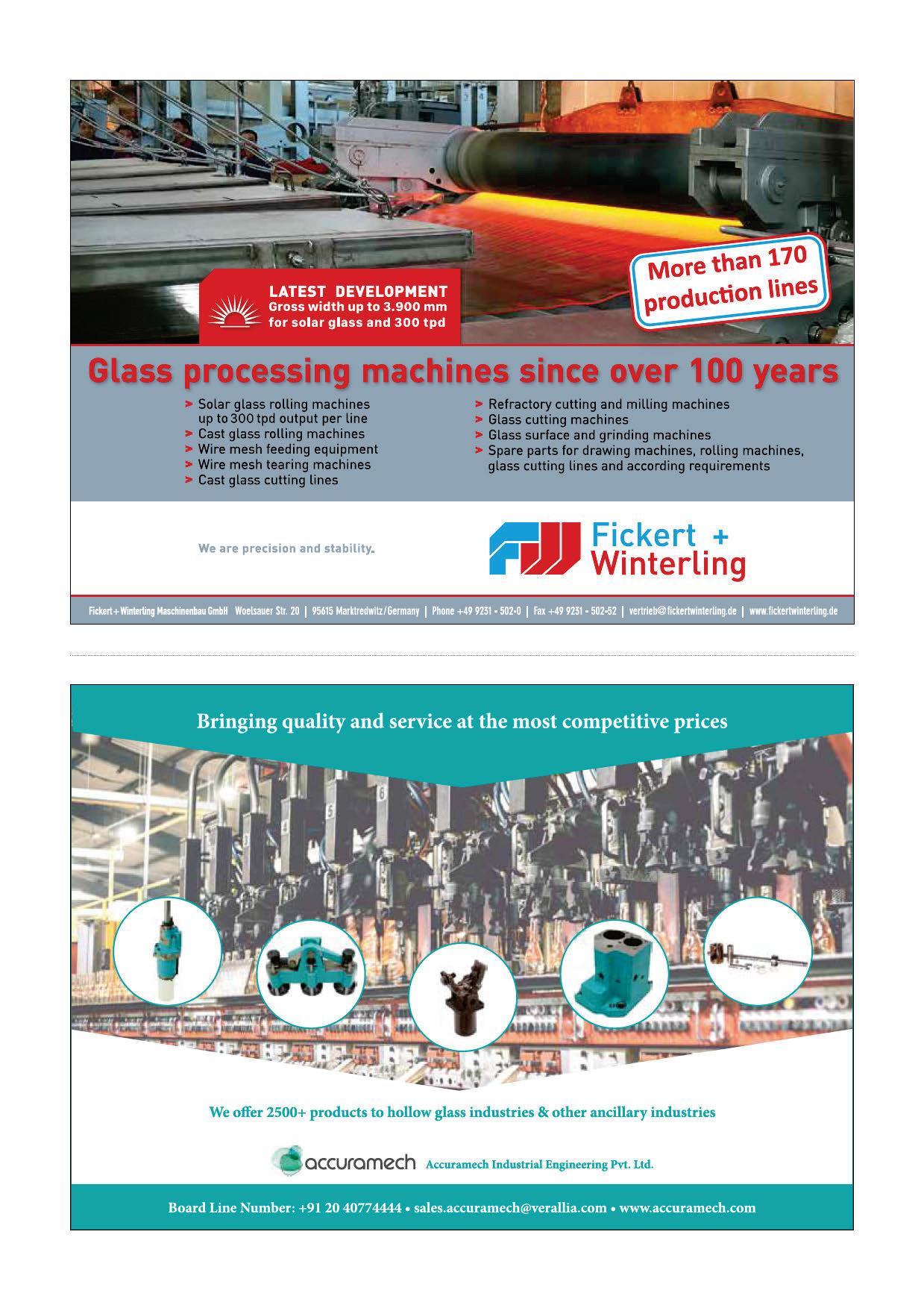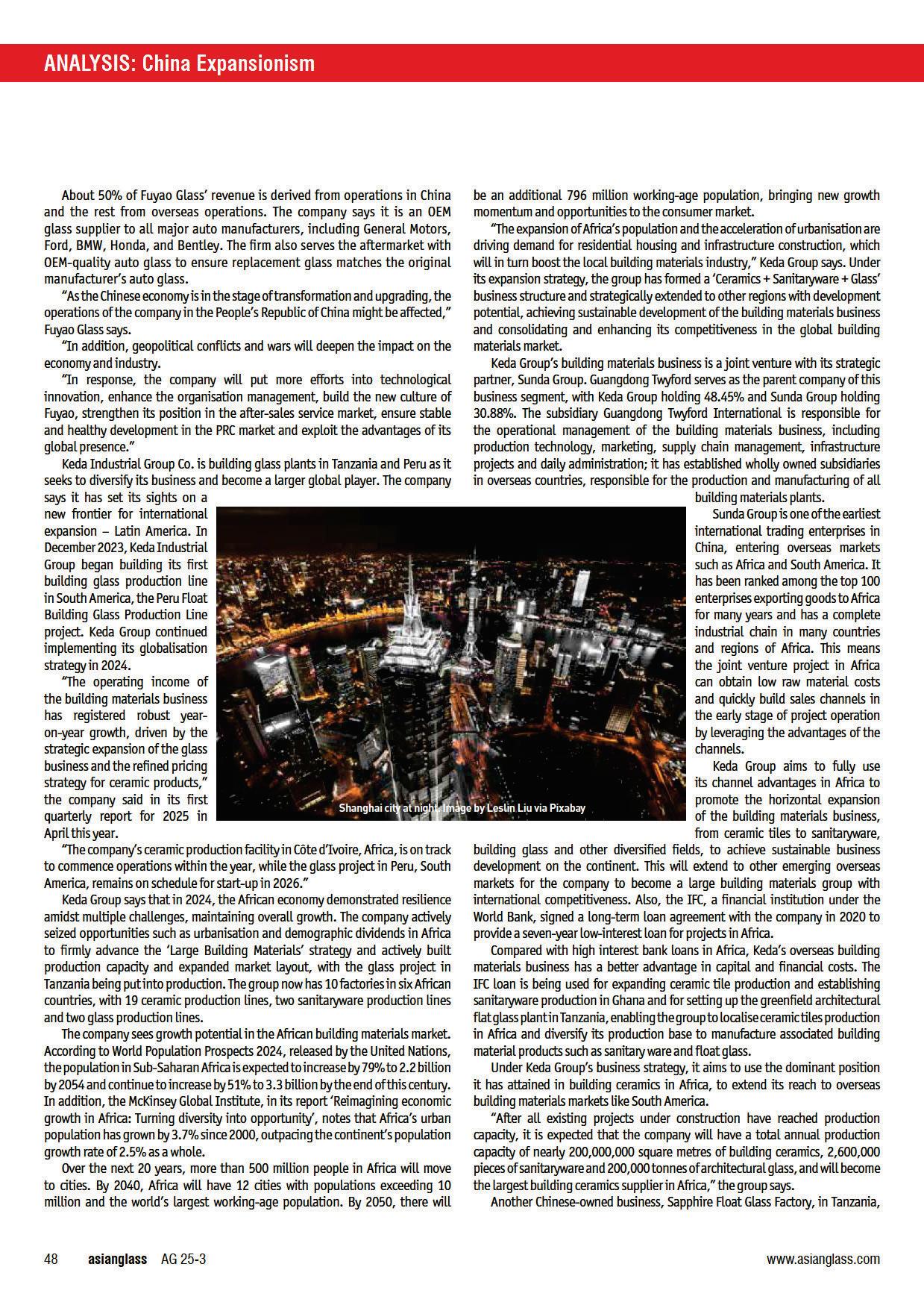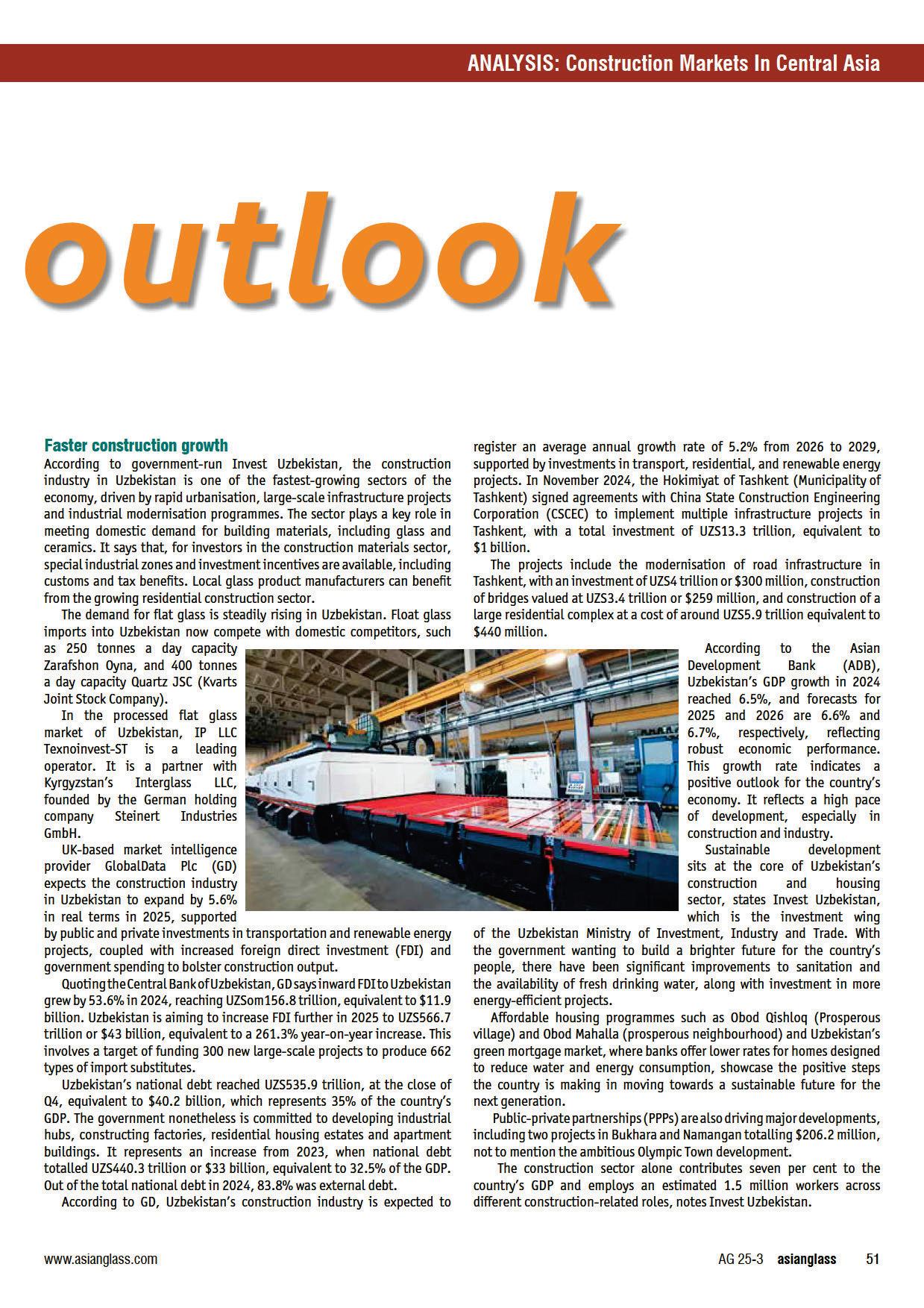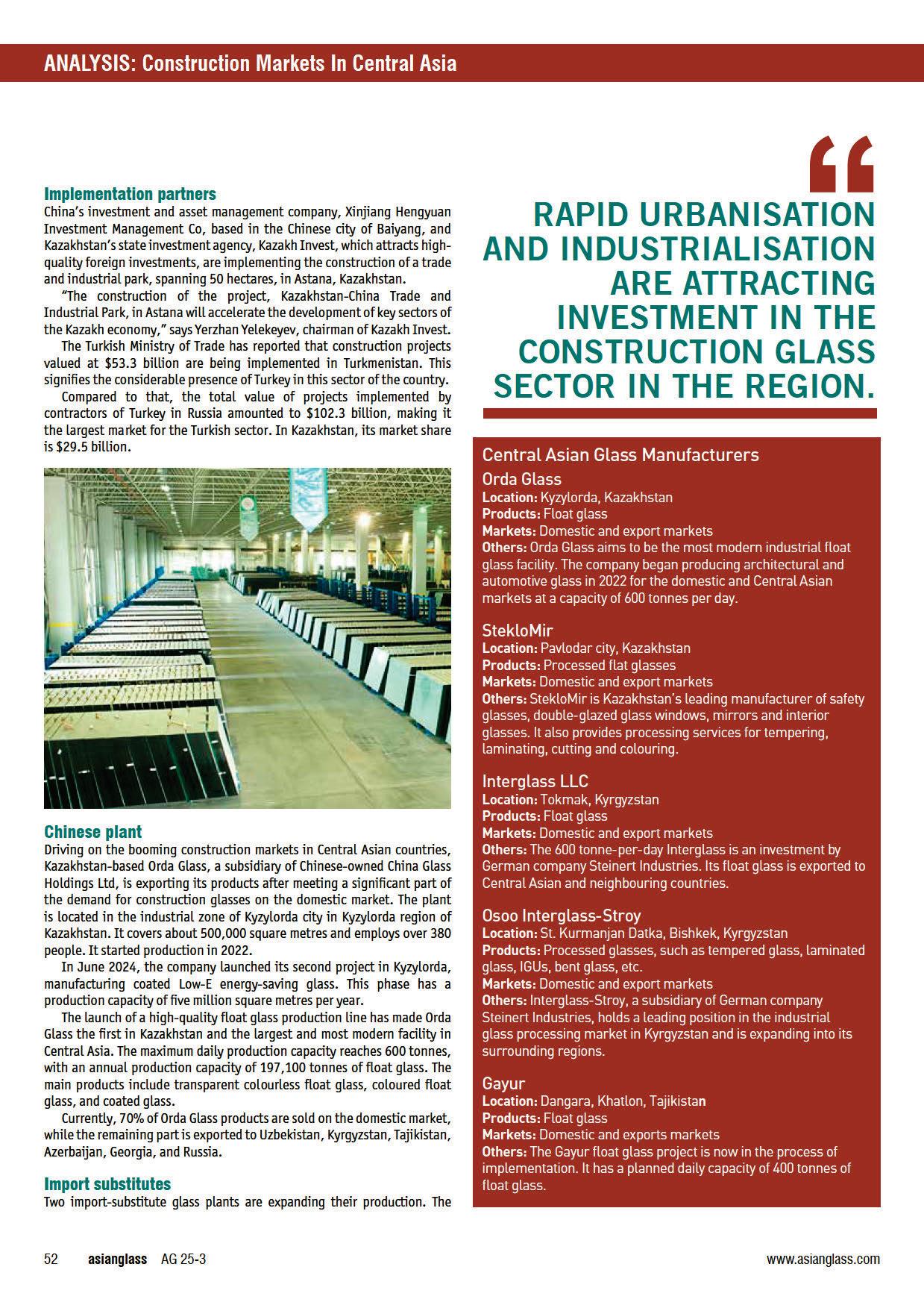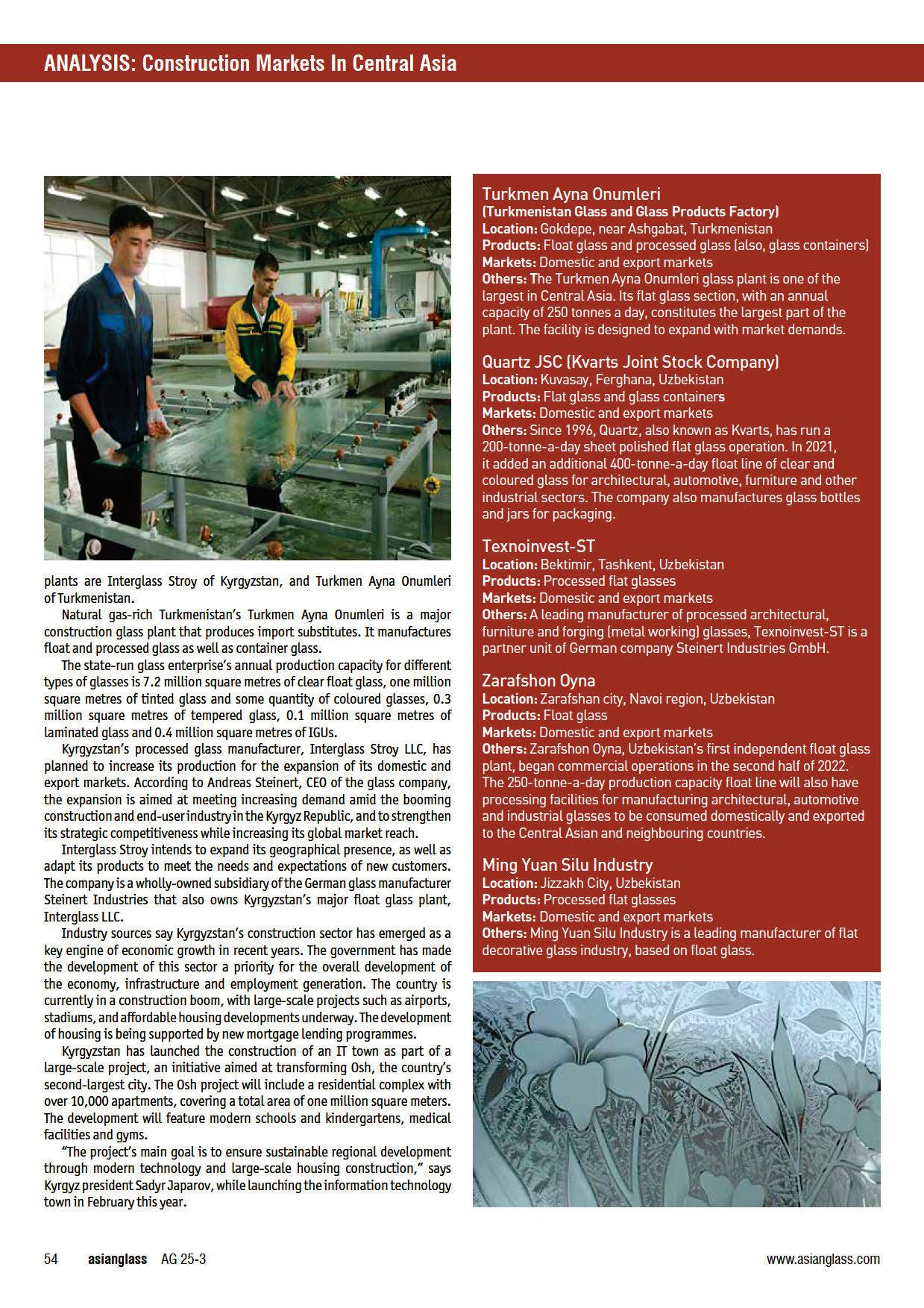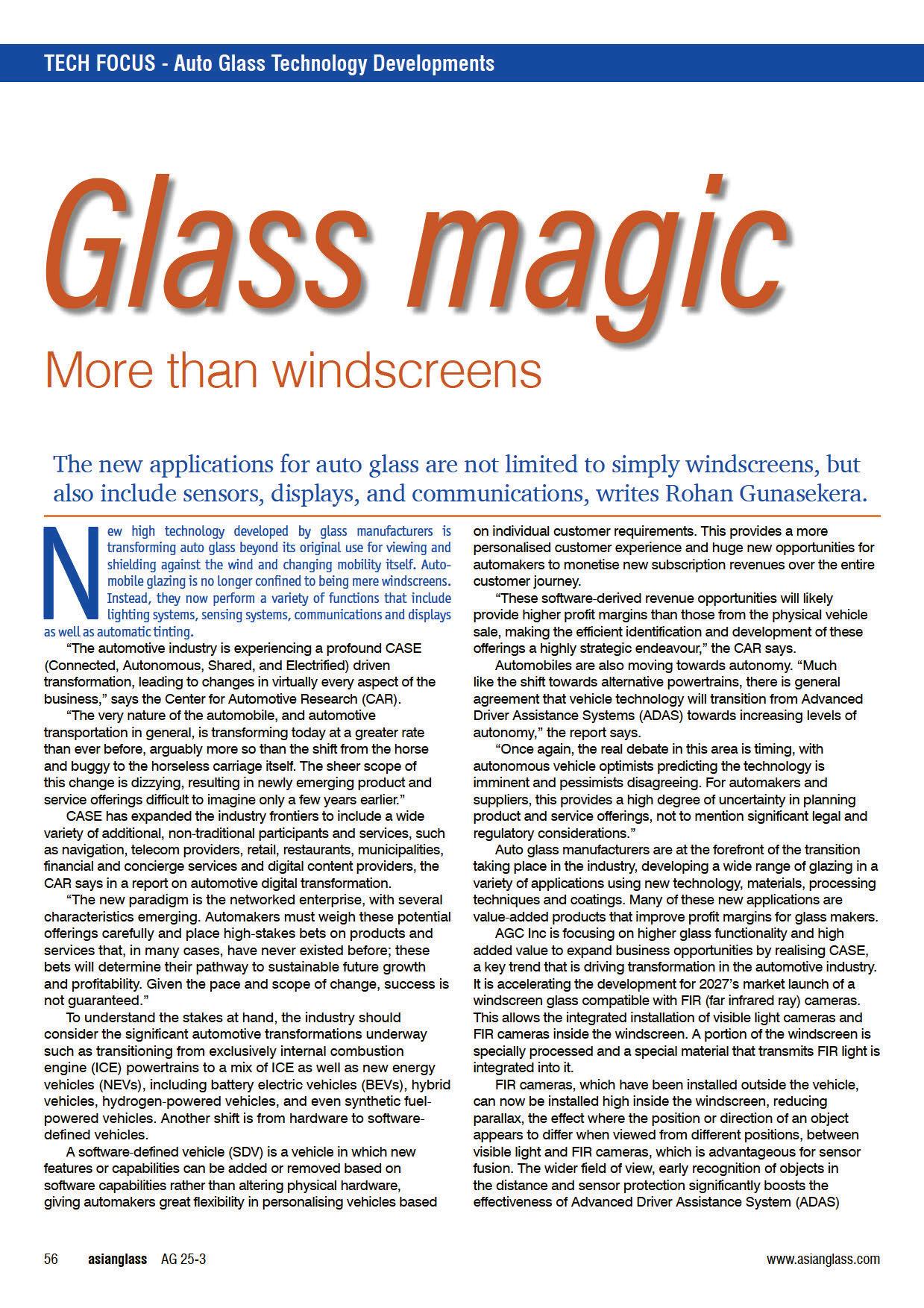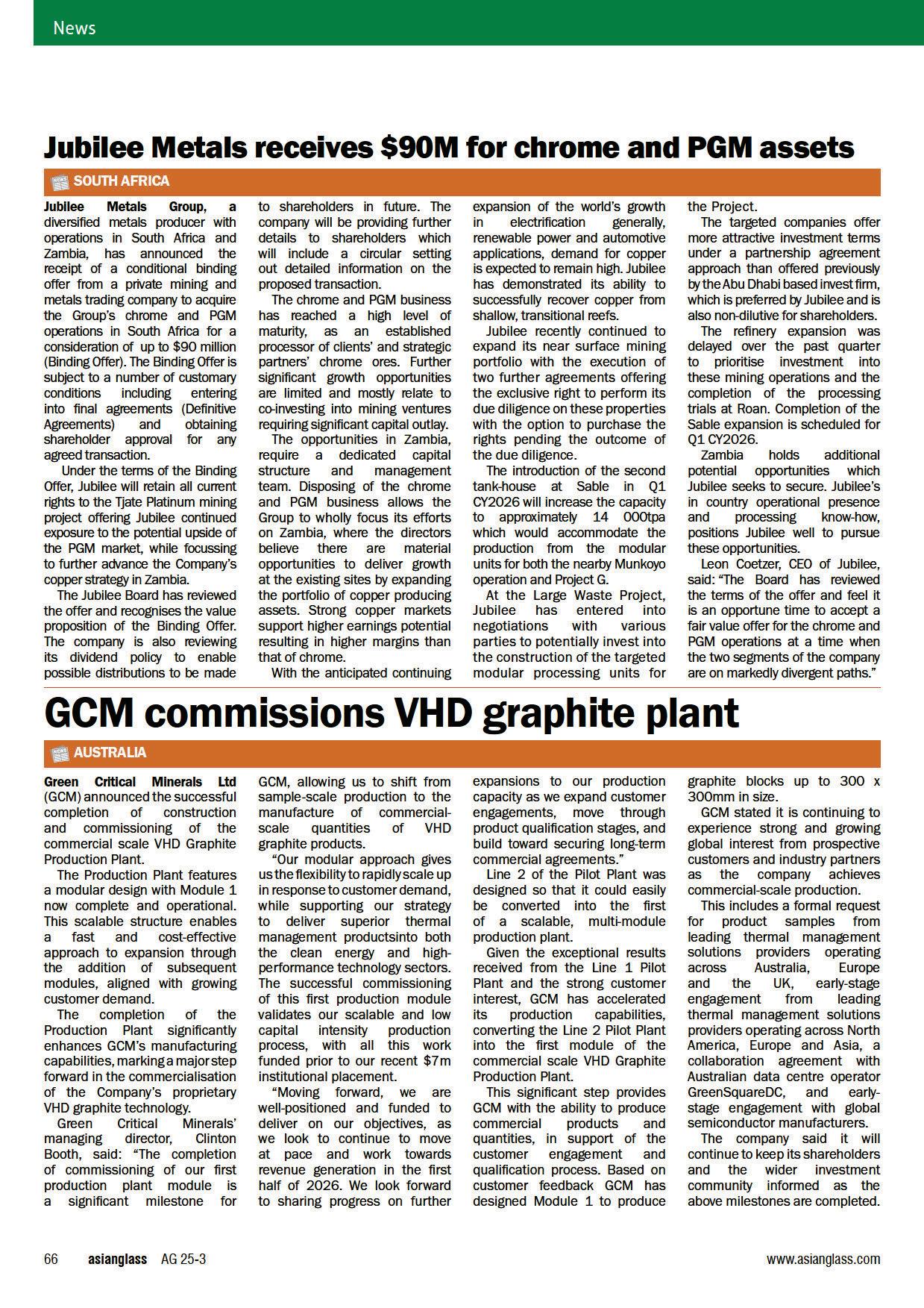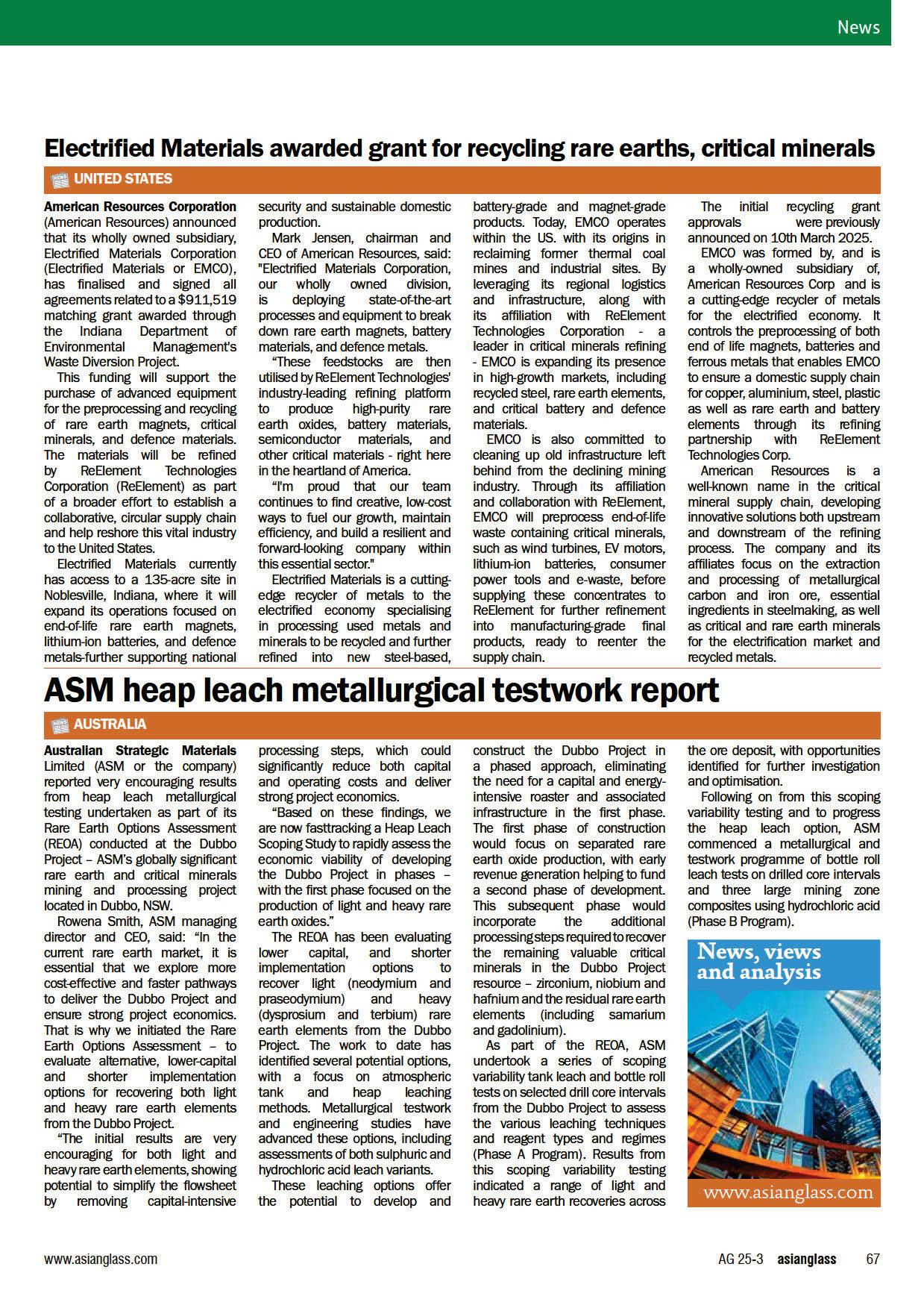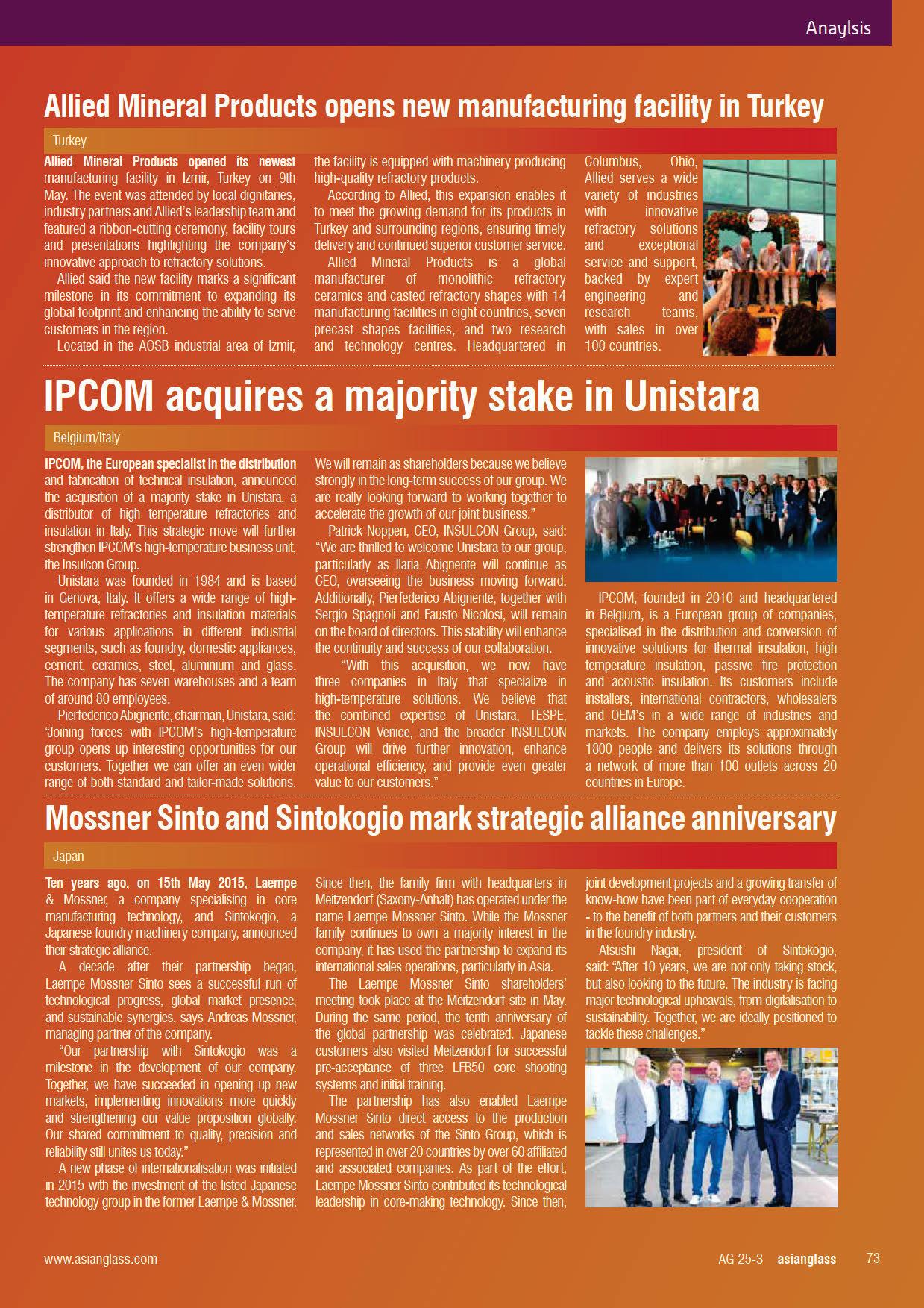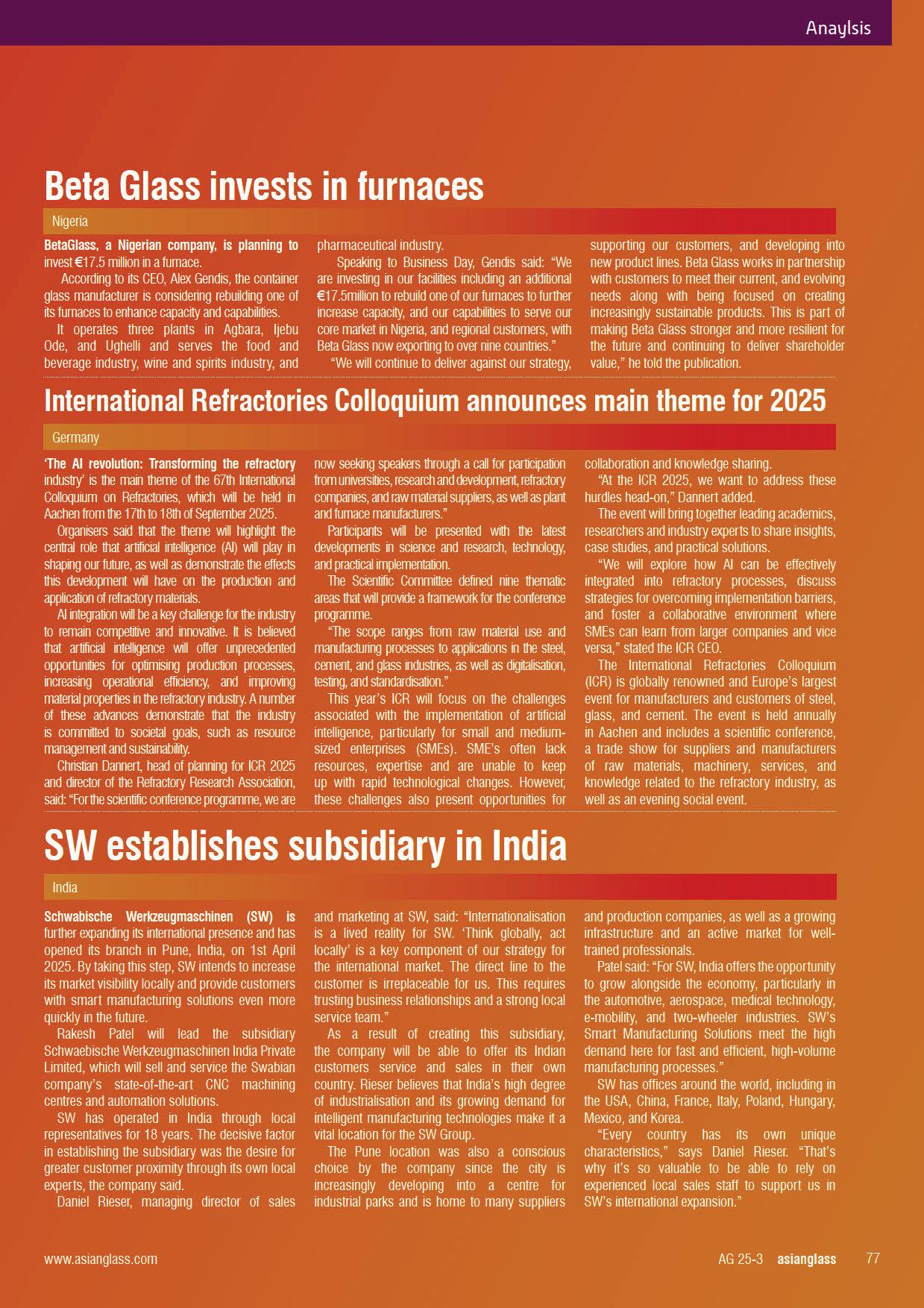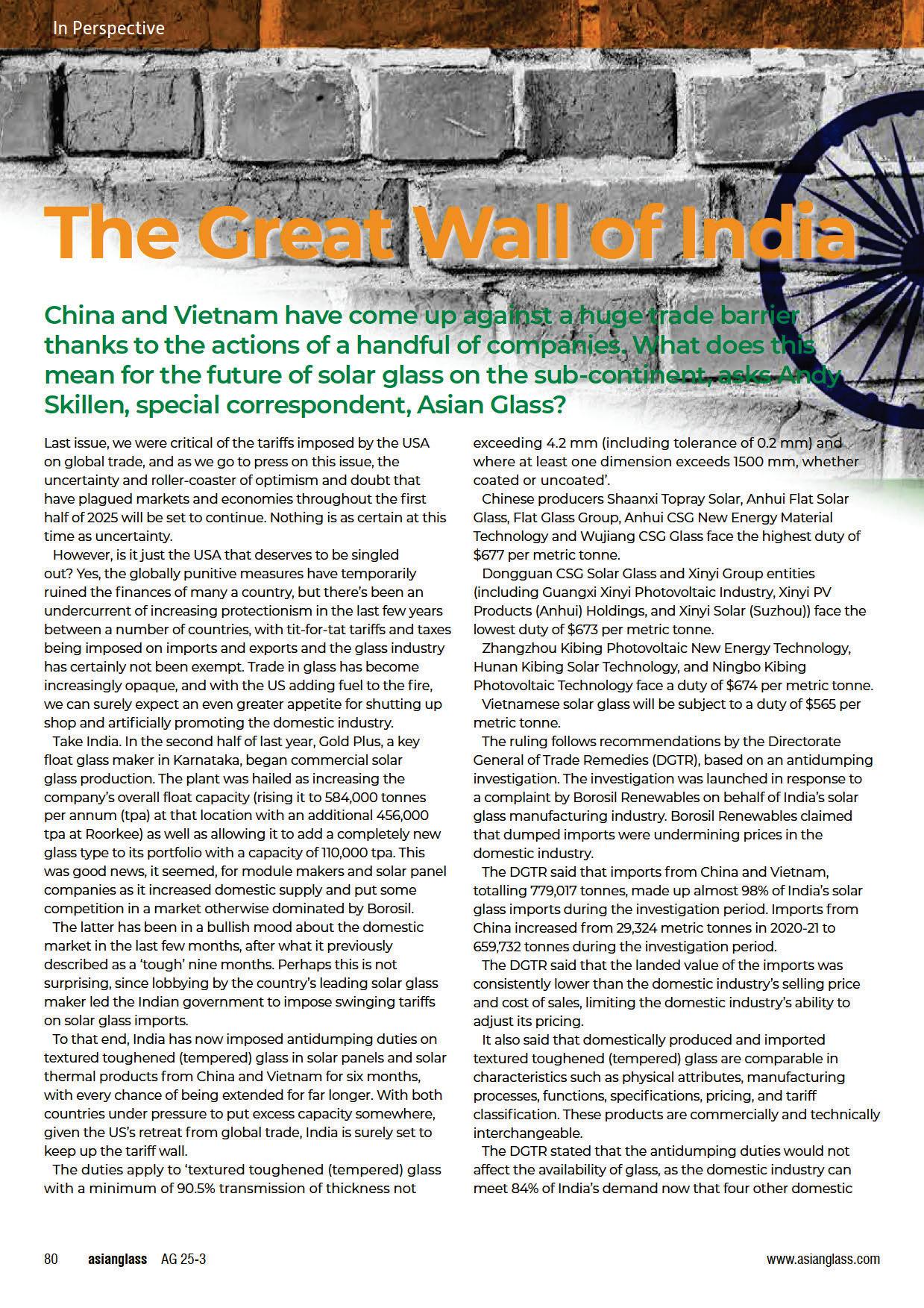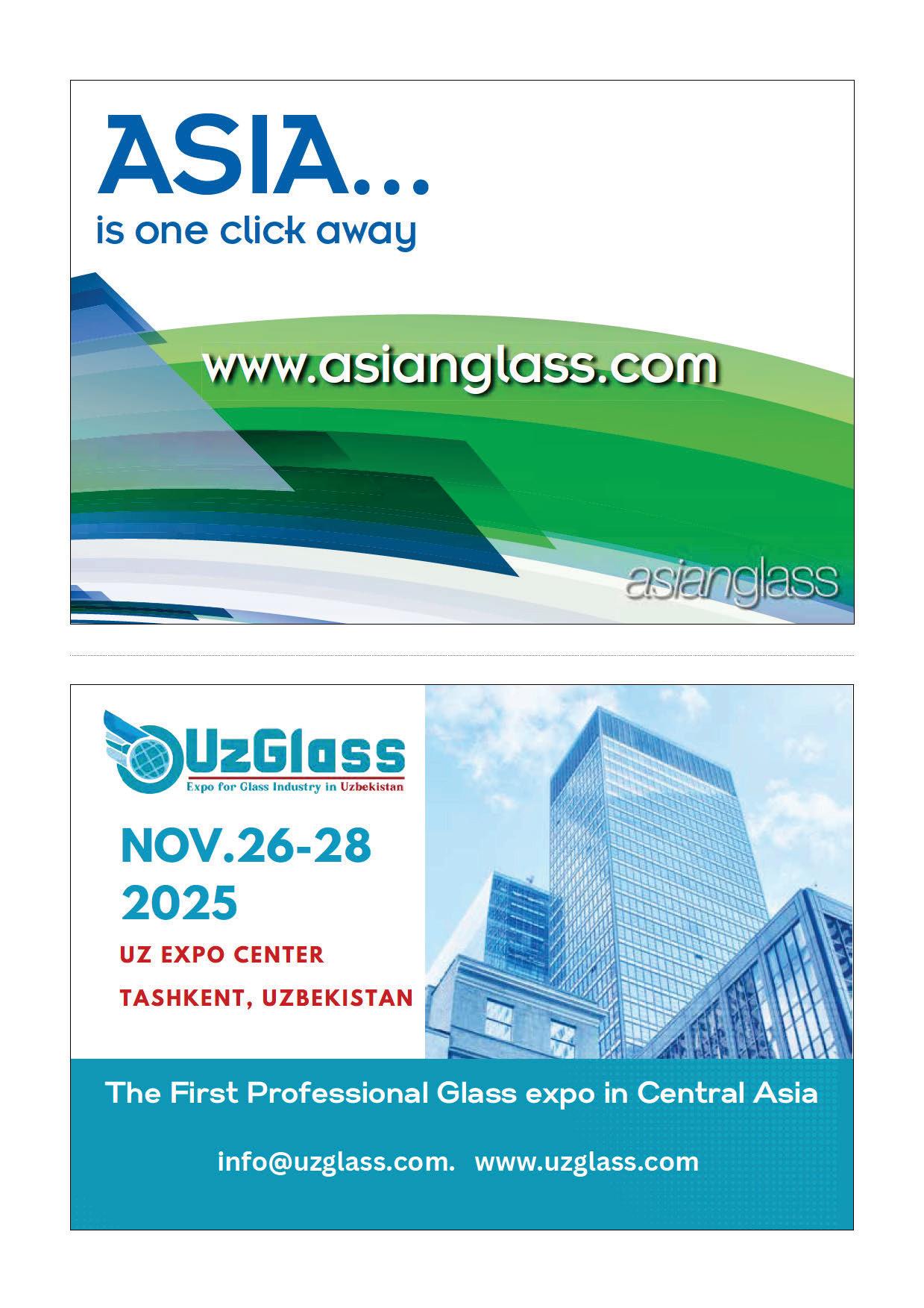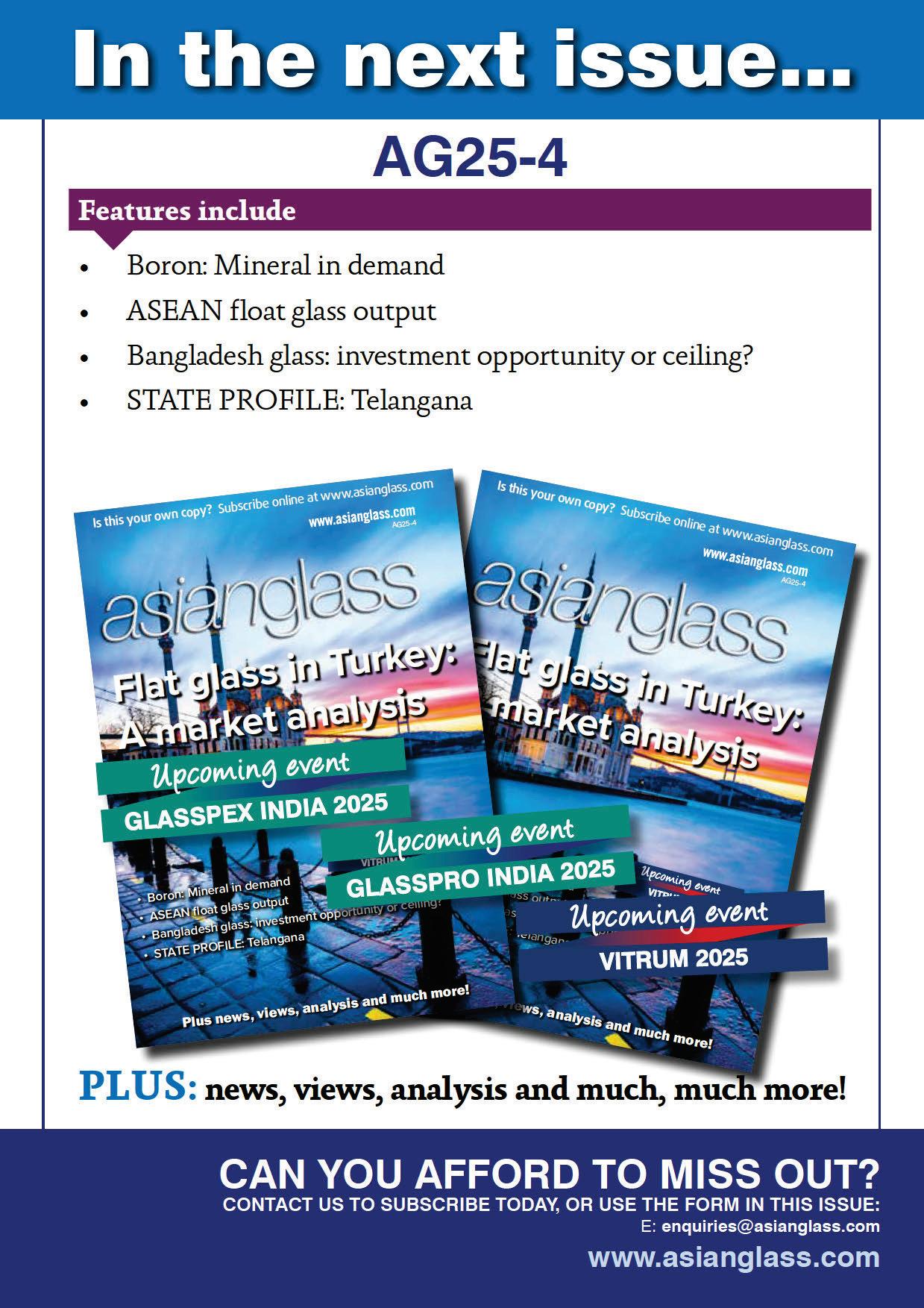


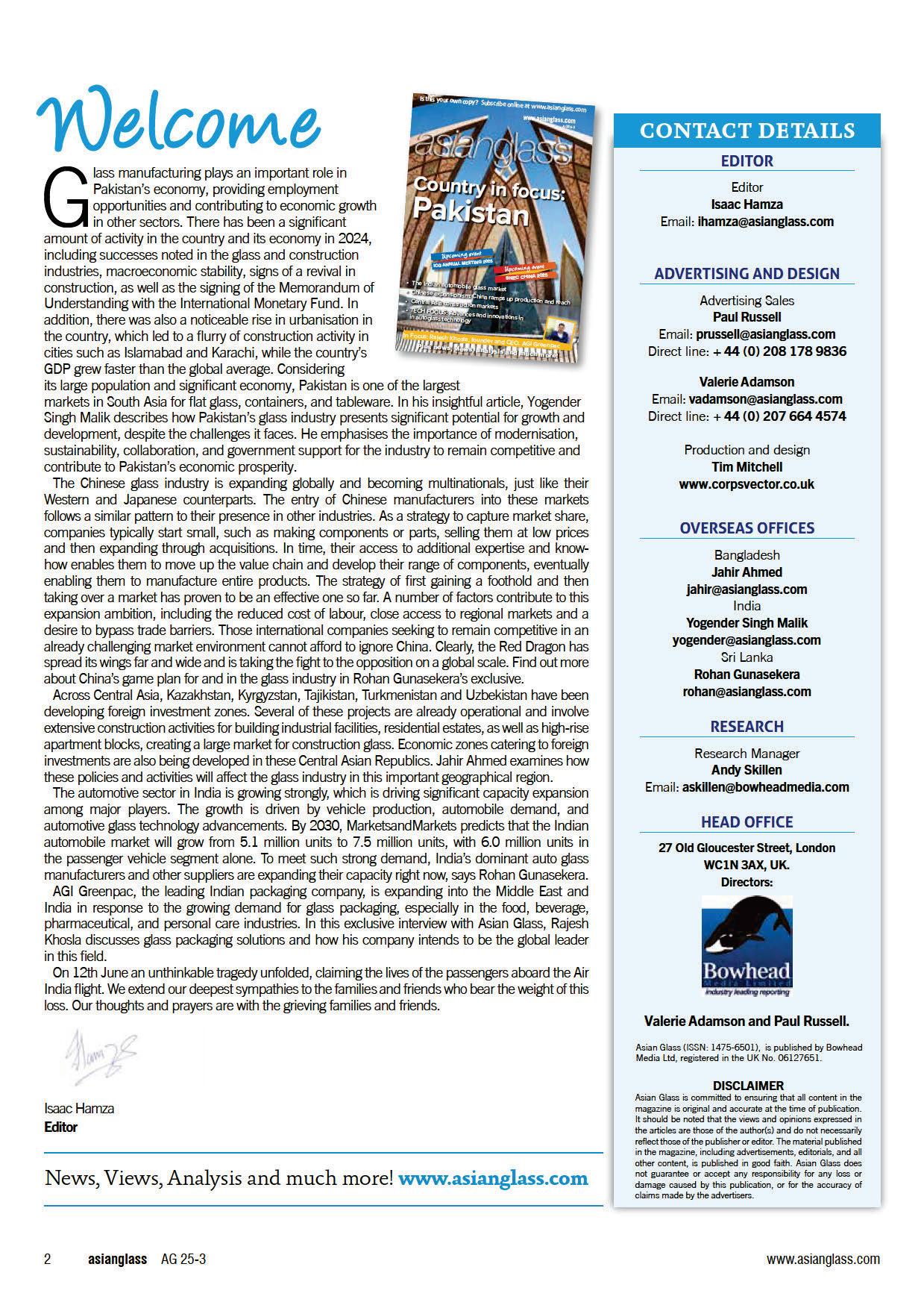

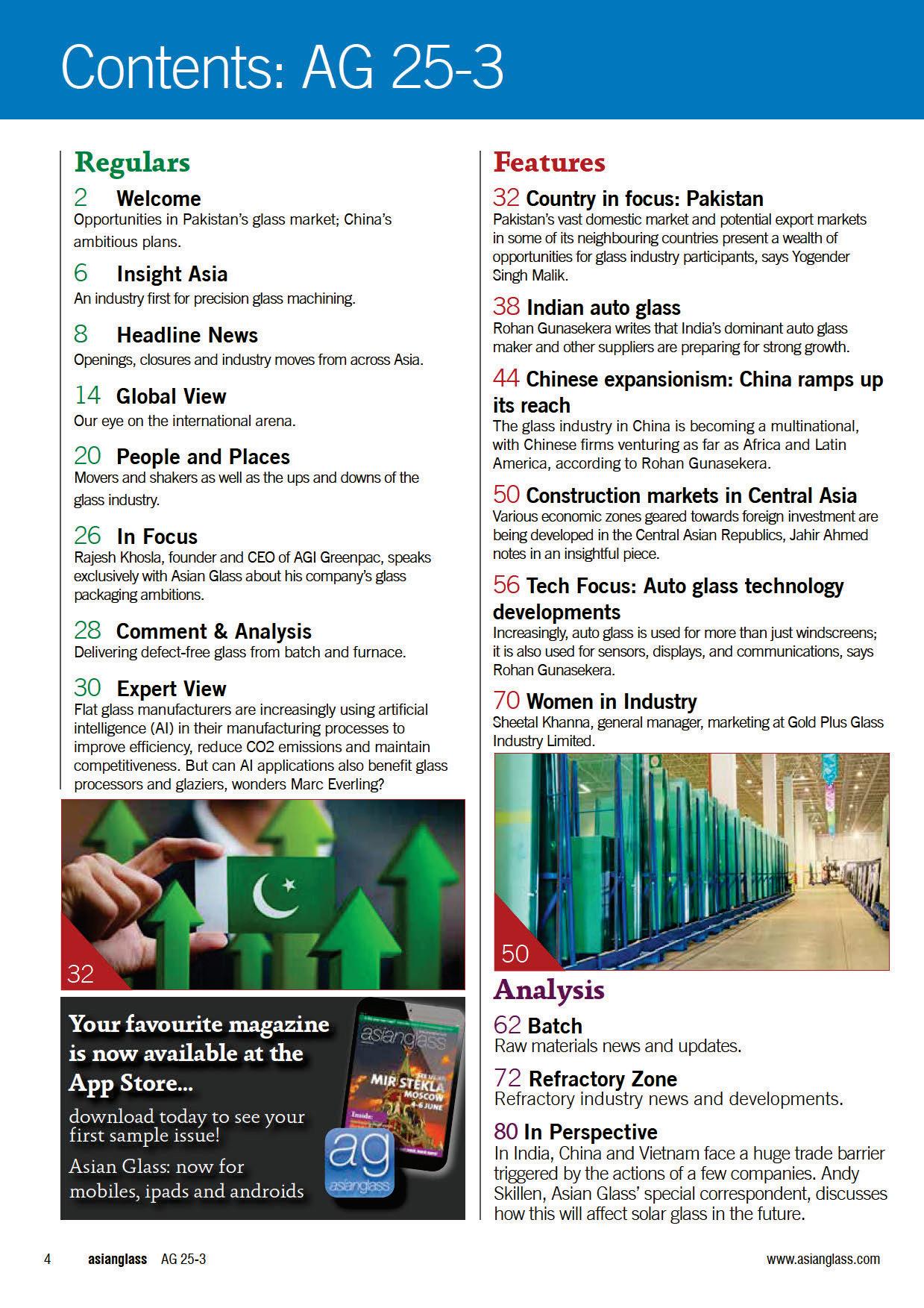



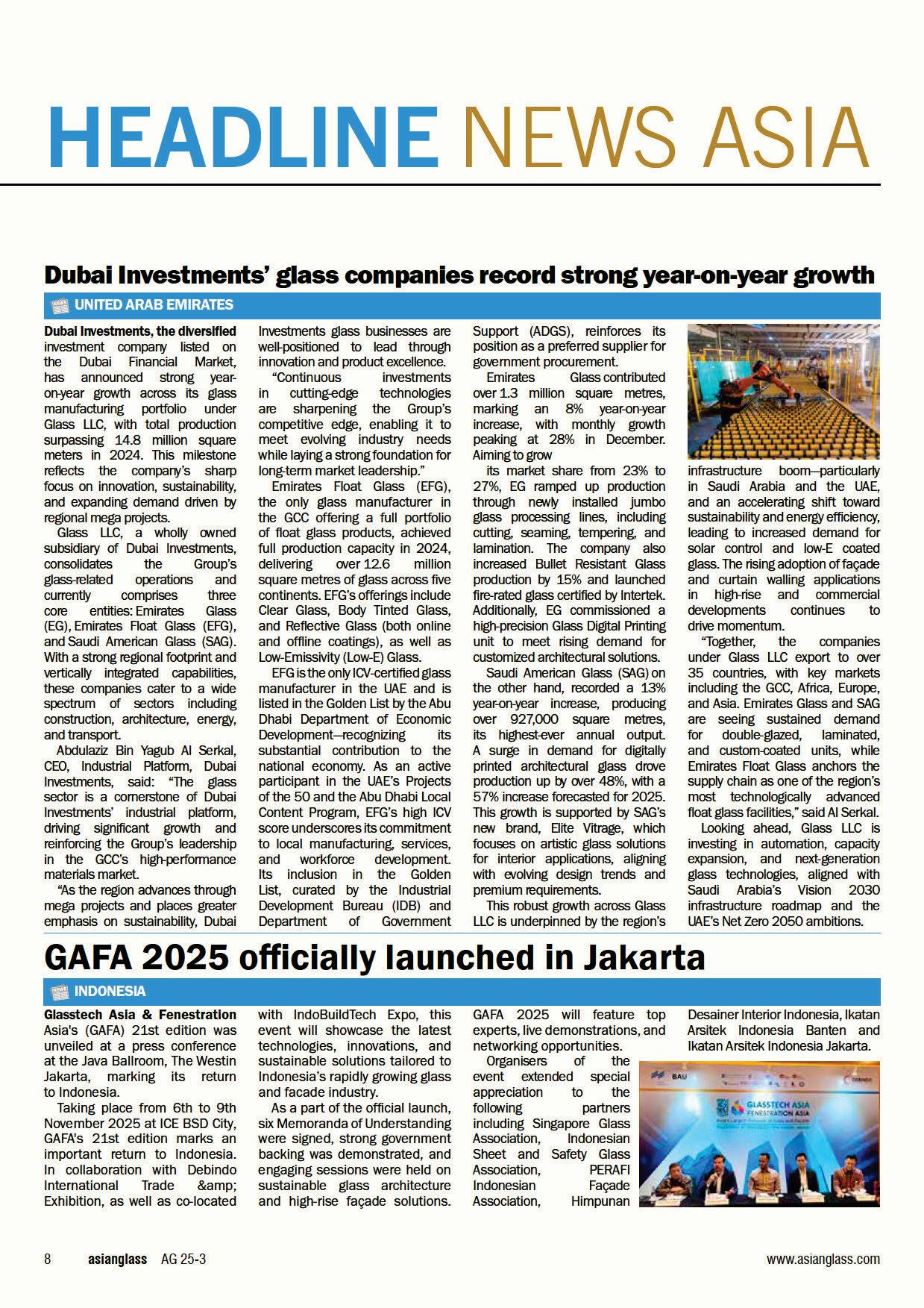








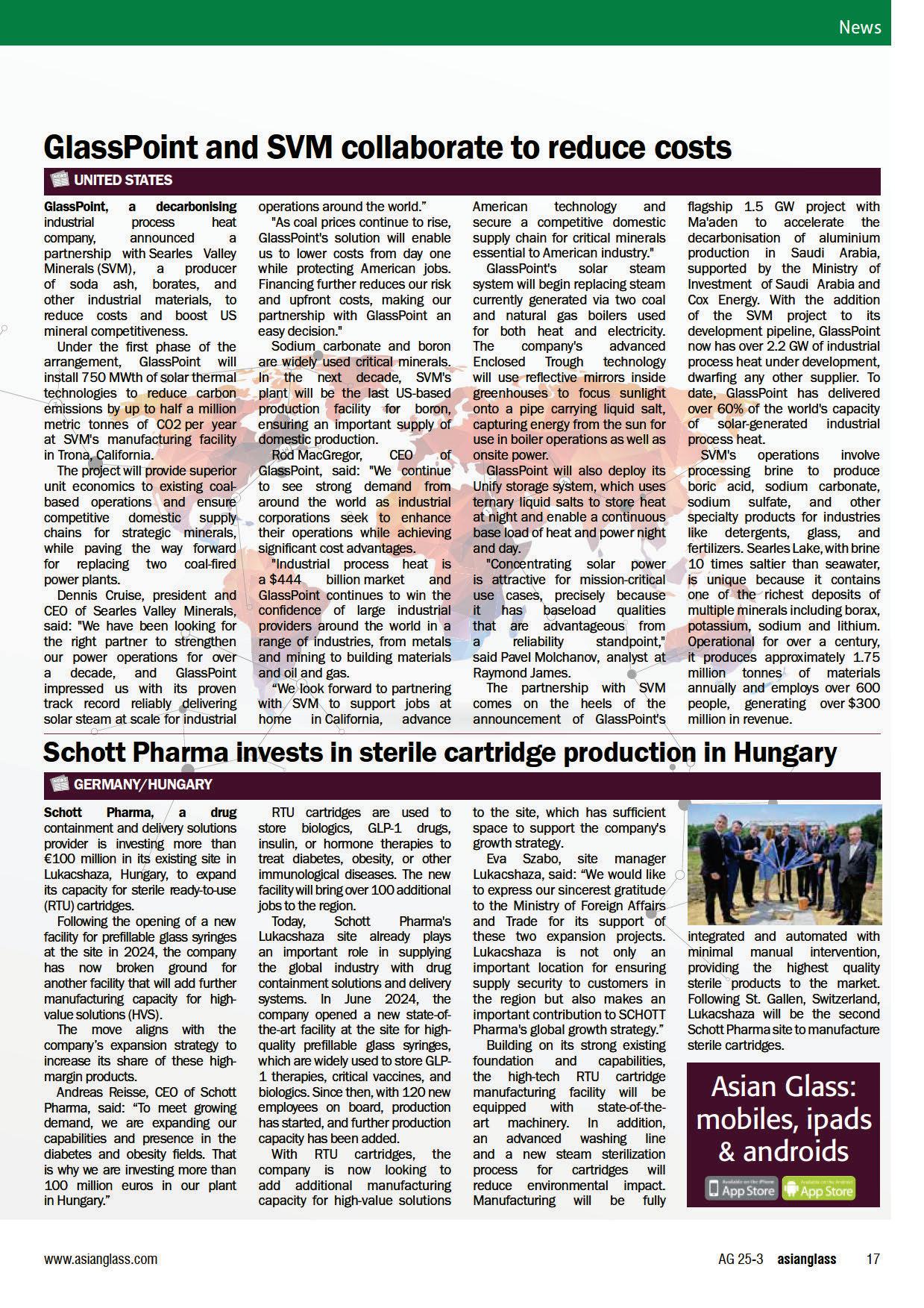

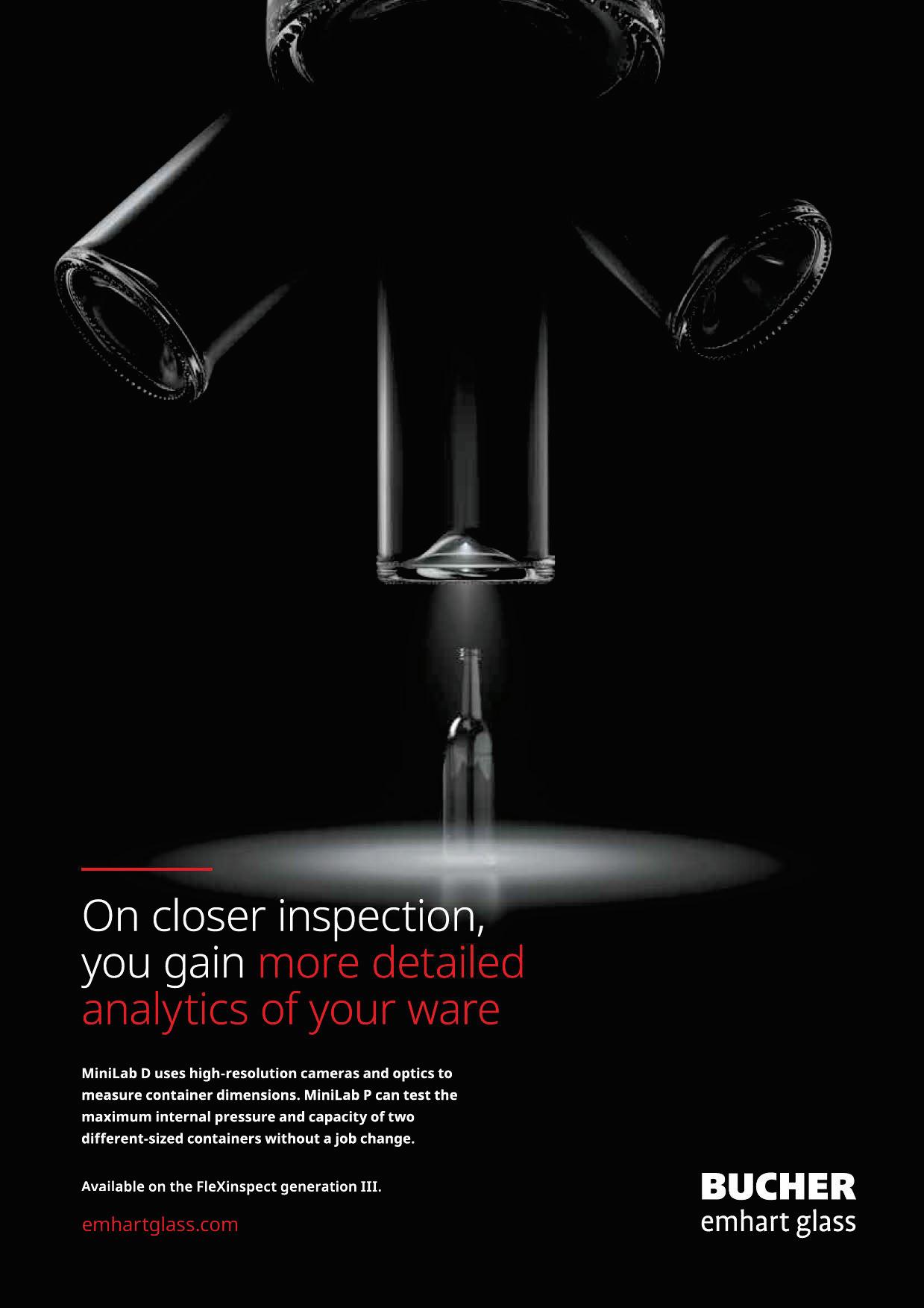

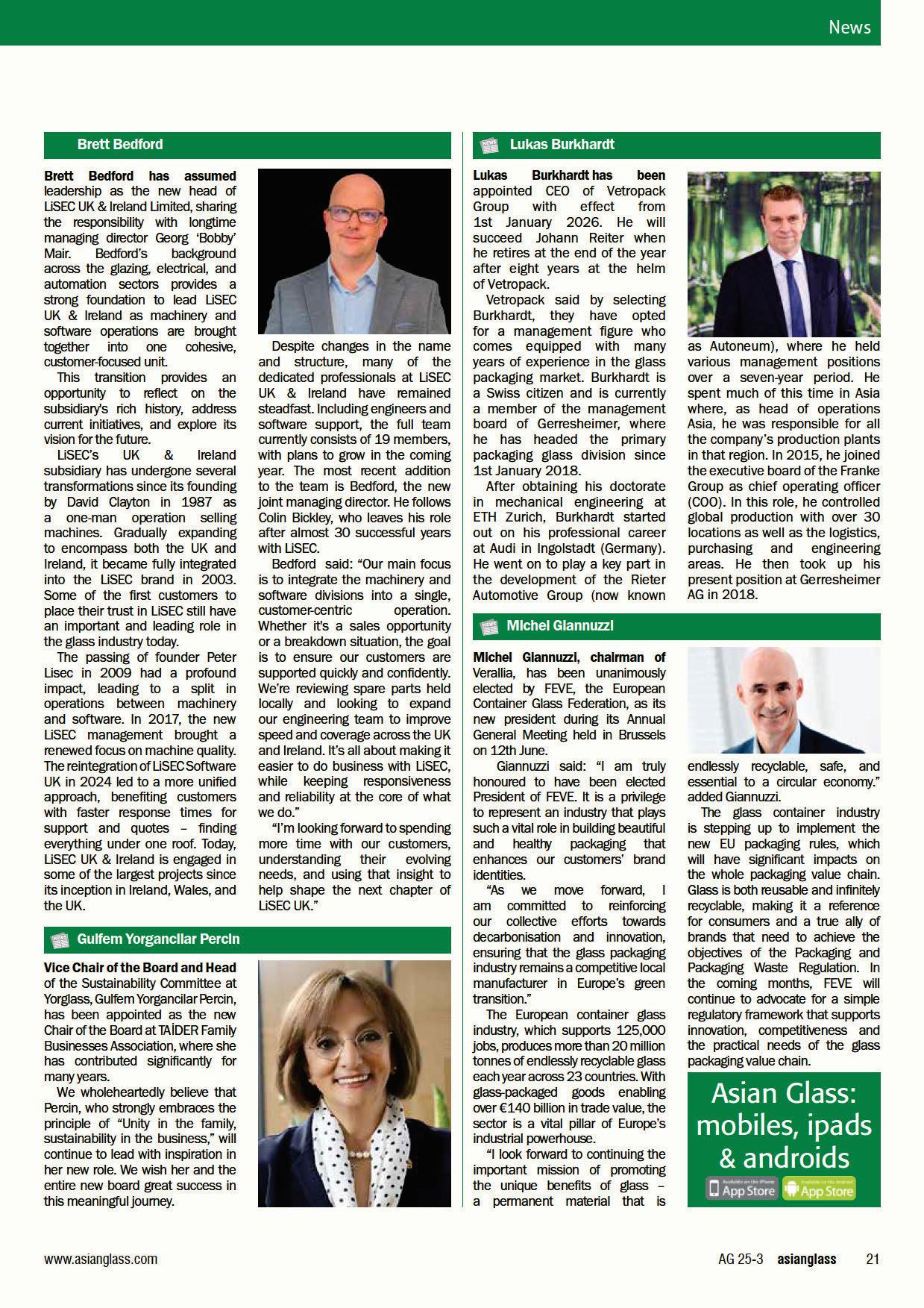
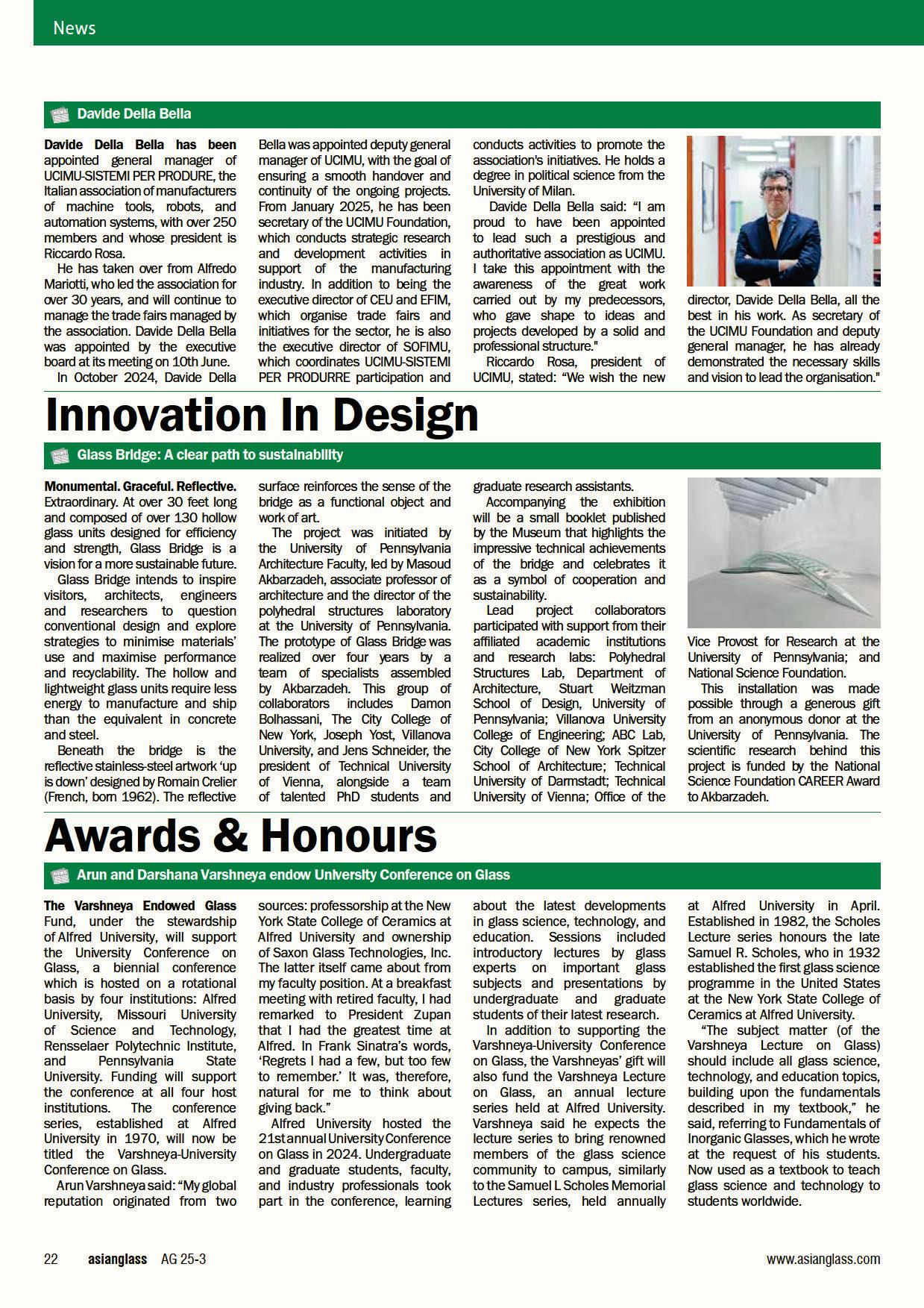








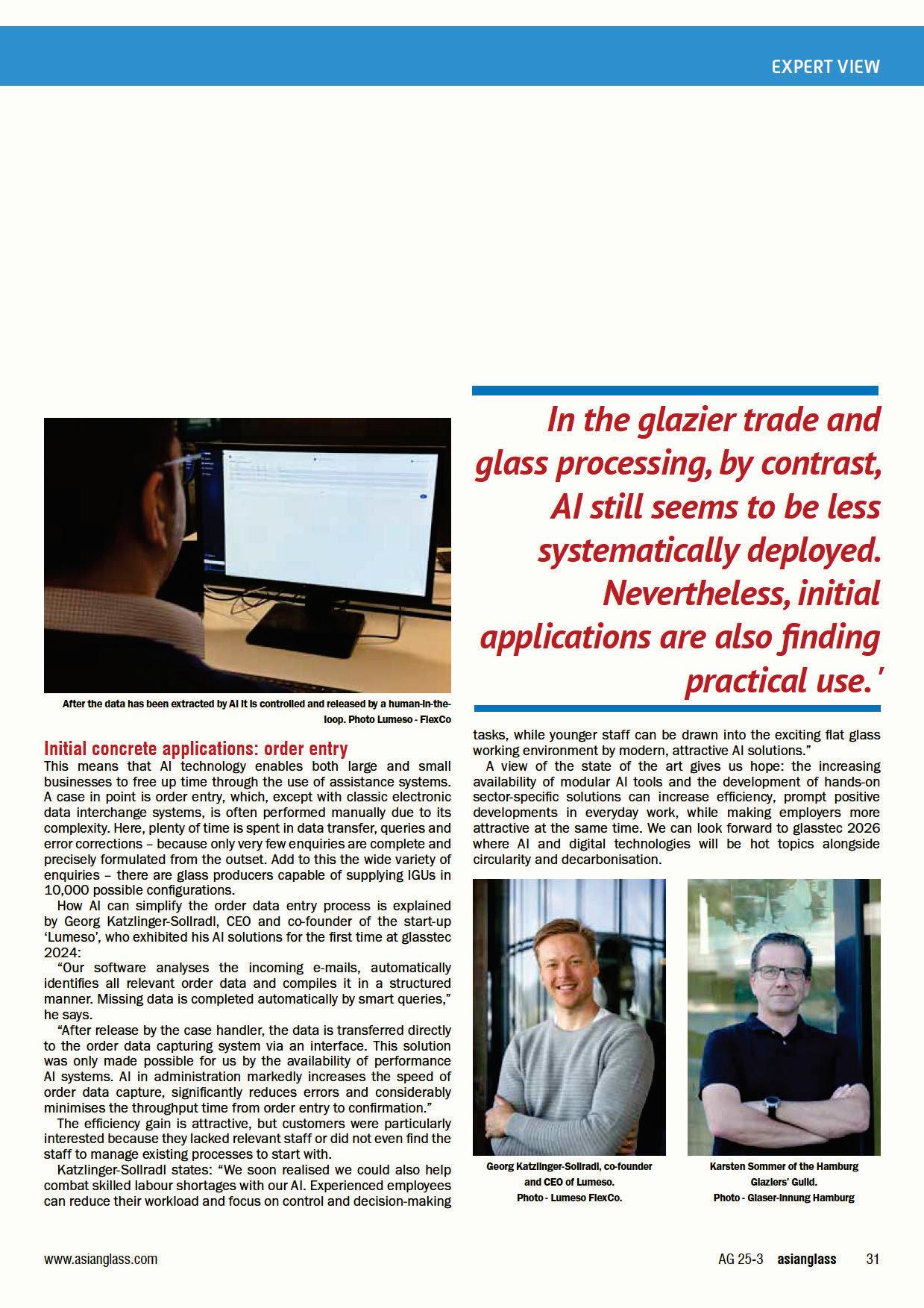



































Pakistan, the second largest country in South Asia and the fourth largest on the Asian continent, represents one of the largest markets for flat, container and tableware glass on account of its large population and sizable economy. The nation’s current low per capita consumption presents domestic glass producers in all three sub-segments with an opportunity to flourish in the coming years. Yogender Singh Malik provides a brief overview of Pakistan’s glass industry in this article.
Three container glass producers, two flat glass producers and two glass tableware producers account for the bulk of glass production in Pakistan. The country’s glass industry is the second largest in South Asia in terms of installed capacity, although economic factors have led to subdued growth rates in the last two years. In fact, the country’s glass industry registered a de-growth in some of the sub-segments during the financial year of 2024 (July 2023-June 2024). It is notable that all three listed companies reported a marginal increase (largely due to a price increase for their products) in their total sales revenues over the previous year.
Barring the last couple of years, Pakistan has experienced a steady increase in the purchasing power of a vast section of its middle class, rising urbanisationandaGDPgrowthratemorethantheglobalaverage.However, despite these enabling factors and the country’s strategic location, its glass industry has lagged some of its neighbours. In addition to the untapped Afghan market, the country has a small domestic market where per capita consumption of glass products is low.
The year 2024 was an eventful year for Pakistan and its economy. In terms of glass and other construction-related industries, the country witnessed a few successes, including an agreement with the IMF, the return ofmacroeconomicstability,andsignsofarevivalintheconstructionsector.
Pakistan currently has four float glass plants with an installed capacity of 2,050 tonnes per day. This sub-segment, owned by two companies- Tariq Glass and Ghani Glass- has seen substantial capacity additions during the last 13 years.
It may surprise anyone unfamiliar with the Pakistani glass industry to learn that the country’s first float glass plant was opened in 2005. In the past, all float demand was met by exports or inferior quality sheet glass. The plant remained the only float glass plant until 2012, when Ghani Glass set up another float glass plant with a daily capacity of 550 tonnes.
In 2013, Tariq Glass, which until then produced tableware glass, built a float glass plant with an installed capacity of 550 tonnes per day. Before Tariq Float Glass, the float glass market in Pakistan was dominated by Ghani Glass, which commanded an 82% market share, with the rest imported from China, India, and Iran.
The largest demand driver of flat glass industry, the construction sector, has exhibited mixed performance in the last few years, thereby impacting the performance of the flat glass industry. Pakistan faces an overall housing shortage of about 12 million housing units. The urban housing
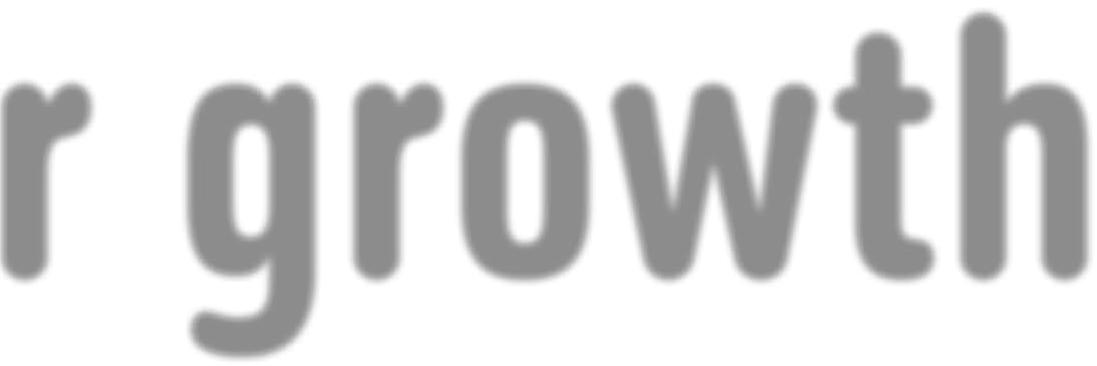
shortage is estimated at 3.7 million housing units, while the rural housing shortage is over eight million housing units. The rising youth population and urbanisation, which is growing fastest in the region, are putting acute pressure on civic infrastructure, including housing. According to some reports, more than one third of Karachi’s urban population lives in slums.
The China-Pakistan Economic Corridor (CPEC) offers significant opportunities for the construction industry and the flat glass industry. As the flagship project of the Belt and Road Initiative (BRI), CPEC has been a driving force behind infrastructure development in Pakistan. From roads and bridges to industrial zones and housing projects, the partnership between CPEC and the construction industry promises to accelerate the growth of flat and value-added glass.
Pakistan’s automobile sector has not been a very significant contributor to automotive glass demand in the country. However, in the last few years, automotive sales have registered a steep increase. The country has witnessed a significant50%year-on-year(YoY)increaseincarsalesforthefirsteightmonths offiscalyear2025(July2024-February2025),reachingatotalof89,770units compared to 59,700 units during the same period in fiscal year 2024. The YoY increase in sales has been driven by lower interest rates, improved consumer confidence, and the introduction of new car variants and models. The uptrend in the auto sector is expected to continue as new car variants enter the market and auto financing recovers amid lower interest rates.
According to the Pakistan Automotive Manufacturers Association, “Localisation initiatives in Pakistan’s automotive industry, which began in 1990s, have injected about $5 billion into the economy and created significant capacity. However, despite these achievements, a number of challenges remain to be addressed. With the right policies and investments, localisation can propel Pakistan towards becoming a major automotive hub.”
The Pakistani downstream glass processing industry has made steady progress in recent years. Currently, the country has more than 20 mid-stream glass processing companies catering to
the architectural and automotive replacement markets. The last 10 years in particular have seen a number of glass tempering and insulating units installed by leading glass processors. Most of the production equipment has been sourced from Chinese technology suppliers.
Pakistan imports a large proportion of the total domestic demand for glass from China in all three major sub-segments. Friendly relations between the two countries and an ambitious China Pakistan Economic Corridor (CPEC) have increased glass imports from China over the last 15 years.
Pakistan’s dependence on China for overall trade has increased after 2008, even as the United States and European Union have lost share, according to a detailed analysis of UNComtradedata.
In 2024, China emerged as Pakistan’s largest trading partner, accounting for 20.7% of Pakistan’s exports and imports compared to 8.7% in 2008. On the other hand, the US, which had a larger share than China in 2008, at 9.1%, saw it decline to 8.1% over the last decade and a half. The European Union’s share of Pakistan’s trade also declined to 16.4% from 17.6% in 2008.
Economy was the major reason for the subdued performance of the glass industry in 2020, 2023 and the first half of 2024. Pakistan’s $350 billion economy struggled as inflation rose to a record high of 38.50% in May 2023, with growth turning negative, reserves falling to barely a couple of weeks’s worth of controlled imports, and interest rates increasing to 22%. It had only $3.7 billion in reserves remaining. For nearly five years, it remained on the grey list of the Financial Action Task Force (FATF) for terror funding, thereby making it difficult for it to access financing.
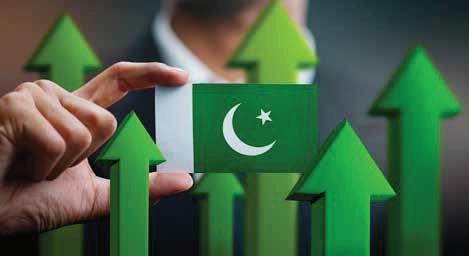
The economic crisis in Pakistan was the longest in its history, pushing the country to the brink of a sovereign default in the summer of 2023. When Pakistan’s debtto-GDP ratio that year reached 70%, 40 to 50% of government revenues were earmarked for interest payments alone.

